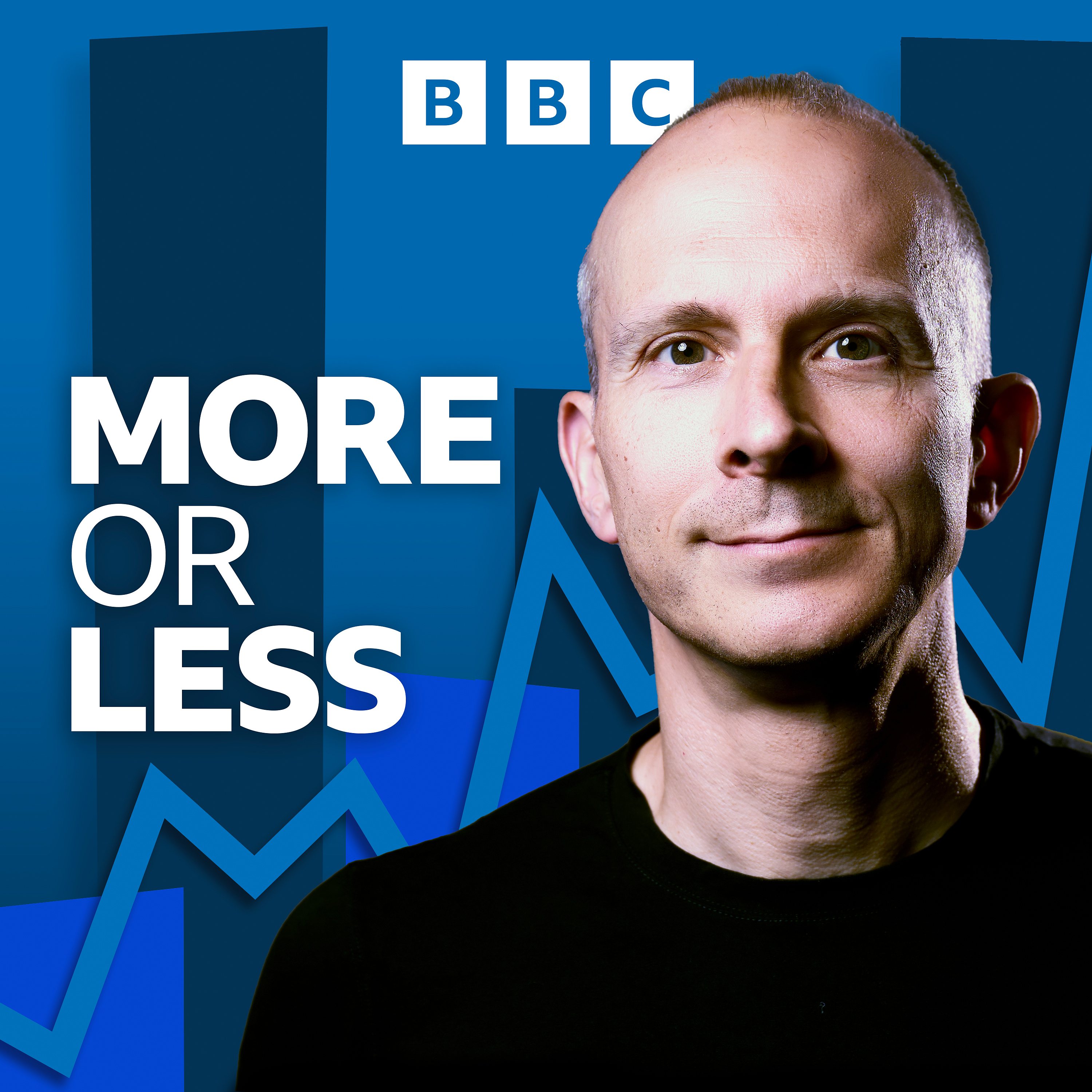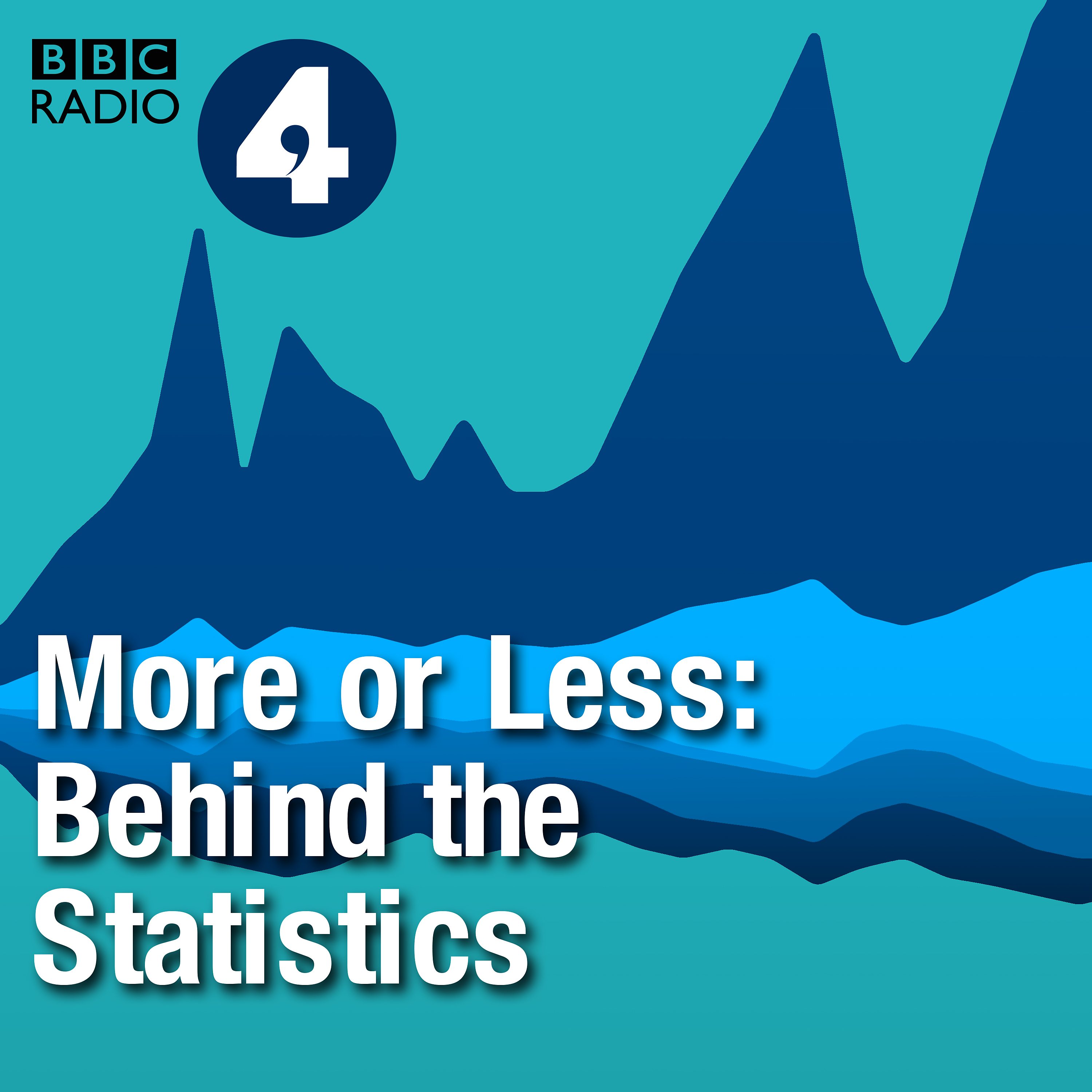
Factchecking the Trump administration?s Autism claims

More or Less: Behind the Stats
Deep Dive
- A significant rise in autism diagnoses has been observed, from 1 in 2,500 in the 1980s to 1 in 31 in recent years.
- This increase may not solely reflect a rise in autism cases but also changes in diagnostic criteria and increased awareness.
- The introduction of Asperger's syndrome and later its inclusion under the autism umbrella broadened the diagnostic scope.
Shownotes Transcript
This BBC podcast is supported by ads outside the UK.
Pro paint days are back at Lowe's and my Lowe's pro rewards members can save even more with limited time deals right now. Buy one, get one half off, select HGTV home by Sherwin Williams, primer and ceiling paint. Plus get free same day delivery to your job site. When you order by 2 PM offer valid through six 13 delivery by 8 PM subject to driver availability. Additional terms apply. See Lowe's.com slash same day delivery for details.
Hey, it's Ryan Seacrest for Jewel Osco. This spring, stock up on all your personal care favorites and earn four times points. Now through June 17, shop in-store or online for deals on all your favorite personal care items like Pantene Shampoo, Native Body Spray Deodorant, Secret Body Spray, Venus Razors, Always Pads Head and Shoulder Shampoo, and Native Deodorant and earn four times points. Then use those points for discounts on groceries or fuel. You don't want to miss these deals. Offer ends June 17th.
Promotions may vary. Restrictions apply. Visit Jewelosco.com for more details. Hello and thank you for downloading the More or Less podcast. We're the program that looks at the numbers in the news and in life. And I'm Lizzie McNeil. Donald Trump has done many...
interesting things in his time as president. And one such interesting thing was hiring Robert F. Kennedy Jr., an outspoken vaccine sceptic, as his health secretary. I don't think people should be taking advice, medical advice from me. Isn't that sort of his job? Anyway, there is one particular cause that he has committed himself to. Autism destroys families.
More importantly, it destroys our greatest resource, which are our children. The World Health Organization estimates that the global autism rate is around 1 in 100. In the US, that number is 1 in 31, a rate that RFK has sworn to lower. 0.7 children have autism in every 10,000. That's less than 1 in 10,000.
Today we're at 1 in 31. Has the prevalence of autism really changed so much in the last 25 years? Or is there a different story behind the numbers? To find out, I spoke to someone who has experience of this condition, both as a researcher and a parent.
I am Mitty Hornig. I'm a physician scientist at the Feinstein Institutes for Medical Research in New York. So to start with, big question, what is autism? It's a big question.
Well, our current understanding of autism has evolved over many, many years. But the core reflects deficits in social communication and interactions, the presence of repetitive behaviors or very restricted interests and activities. And these are features that appear early in childhood.
Autism spectrum disorder is a neurological and developmental disorder that can affect how someone communicates, socialises, learns and behaves. It can be a very disabling diagnosis. It's not always. But what about the numbers? One in 20,000. So we've gone from 20,000 to 34, 36. That's unbelievable.
We cannot find a source for 1 in 20,000 people in the US being autistic. Lots of numbers have been thrown around, but there haven't been that many studies. And one of the larger studies we have was conducted by researchers from UCLA in the 1980s. They looked at all children with an autism diagnosis in the state of Wisconsin and concluded that 4 in 10,000, aka 1 in 2,500, children had autism.
Other studies from around that time suggested a similar picture across the US. Recently, the Centers for Disease Control published a report where they found that 1 in 31 children aged 8 have an autism diagnosis, meaning about 3% of US 8-year-olds are autistic. Now, this is obviously a huge rise,
But why are the numbers growing? We know it's an environmental exposure. Hmm. Let's start with a really important point. The big increase in the number of people being diagnosed with autism is not the same as a big increase in the number of people with autism. Now, that might sound a bit weird, but bear with me. It's largely to do with the so-called level of autism being diagnosed.
autism is said to have different levels to it and these levels correspond to the amount of support someone needs to explain this we're going to borrow some content from radio 4's the autism curve available on our podcast stream and don't worry producer simon we will give it back maybe
My name's Francesca Happé. I'm Professor of Cognitive Neuroscience at King's College London and I've researched autism since 1988. Over the last 40 years, the meaning of an autism diagnosis has changed. So the original descriptions of autism are of children who have pretty high support needs...
The figures for the 80s, that's the 4 in 10,000 figure, only looked at the highest levels of autism. People with these types of diagnoses make up about a quarter of the current total. During the late 80s and early 90s, a new diagnosis was introduced, Asperger's. This was used to describe people who had certain autistic traits but without significant learning or developmental delays. So the introduction of Asperger's disorder into the diagnostic manual really changed things.
it opened up a different part of the spectrum to be recognised. During the late 90s, this term became controversial as its namesake, Hans Asperger's, was found to have handed child patients over to a Nazi euthanasia clinic. The term was dropped from diagnosis and Asperger's formally became part of the autism umbrella. So...
The autism net was cast wider, and in the mid-2010s it was cast wider still, when the fifth edition of the Diagnostic and Statistical Manual of Mental Disorder, DSM-5, introduced another so-called lower level of autism. Pervasive developmental disorder not otherwise specified, PDD-NOS. And this was meant to be for people who just missed the criteria for autism, so that they would still get help.
it became by far the most prevalent diagnosis, especially in America. It increased the numbers. These lower-level cases are also driving the more recent increase in the numbers. Just look at between 2000 and 2018. The higher level of need cases became 1.5 times more common. But over the same period, the lower level of need cases increased by five times.
Awareness and diagnostic procedures have also improved, again, meaning more people are being counted. Diagnostic ascertainment and awareness and so forth, I think that can largely explain some and probably most of the increase, but perhaps not all.
Now, it's incredibly difficult to clearly disentangle the increase in diagnosis from any potential increase in underlying rate of autism. But scientists like Mehdi do know a bit more about why people have autism. We think it's probably about 80% genes that you inherit from your parents, transmissible, heritable.
Autism runs in families. Research in Norway found that children whose full siblings had autism were 10 times more likely to have autism themselves.
But what about other factors? Some environmental factors can cause genes to mutate whilst the foetus develops, increasing the risk of autism. These can happen in response to certain things in the environment. It could be infection, it could be toxins, or all sorts of things, and we really need to know more about that. But likely, the important somatic mutations for autism are also occurring early on
in fetal development because they would need to be able to contribute to brain changes that we know are present in many individuals with autism. Now, there is more work to be done before these environmental conditions are fully understood.
But there are some better understood factors that increase the chances of having a child that has autism. For example, men who father kids when they're over the age of 50 have a 66% greater likelihood of having a child with autism. And if a pregnant woman experiences a high fever in her second trimester, her child's chances of developing autism increases by 40%. We...
also need to consider why, if some of these environmental factors are so common, why do only some people hold this risk? The final thing to say is that Robert Kennedy is painting an extreme view of what autistic people are like. These are kids who will never pay taxes. They'll never hold a job. They'll never play baseball. They'll never write a poem. They'll never go out on a date.
Many of them will never use a toilet on a system. I had a near 40-year-old with autism who lives on his own, who has a girlfriend, who works. He does have a lot of help, but there are...
very productive members of our society. And my son and I know many others in the community who are just really lovely, delicious people, whether they can speak or not speak, to even be suggesting that these people don't have a life that's worth living is just horrific.
Thanks to Mehdi Hornig. And that's all we have time for this week. So please do keep your questions and comments coming in to moreorless at bbc.co.uk. The Radio 4 series is back next week. So until then, goodbye.